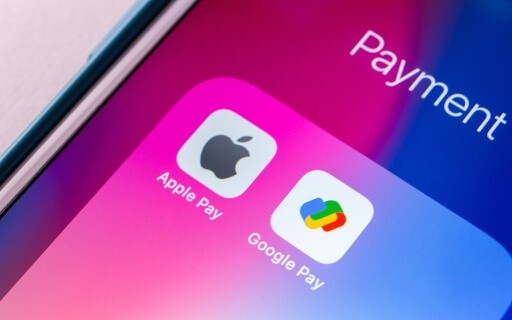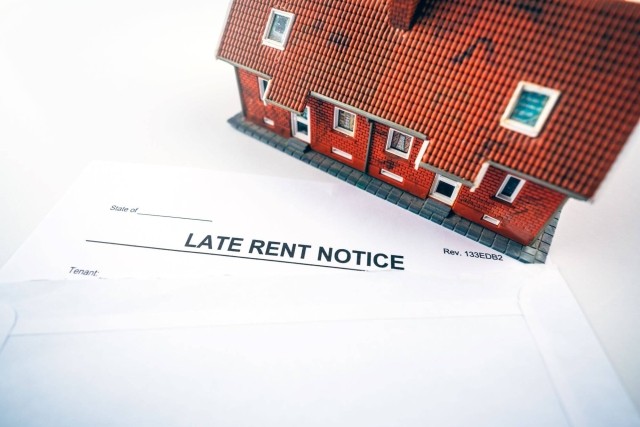Discover the convenience and efficiency of electronic rent payments - a revolutionary solution transforming how landlords and tenants manage their financial obligations. This comprehensive guide delves into the pros and cons of electronic rent payments, providing invaluable insights and best practices.
What Are Electronic Rent Payments?
Electronic rent payments are a way to collect rent from your tenants digitally. Instead of waiting for the mailman to deliver that check or going door-to-door to collect cash, you've got the rent payment coming straight into your bank account.
Now, you might be wondering, "How does this work?" There are various methods available for electronic rent payments, including direct deposits, credit card payments, and online portals or apps specifically designed for rent collection, such as Apartments.com Rental Manager. Our expense tracking platform helps you collect rent online and summarize rental expenses by property and tax category. From there, you can easily export them to CSV or PDF formats to make doing your taxes a breeze. With Apartments.com, you can download the required tax filing forms directly from your account, and they are backed up for seven years.
The Pros of Electronic Rent Payments
Electronic rent payments provide numerous benefits for both landlords and tenants. Here are some key advantages to consider:
1. Convenience: Electronic rent payments offer unparalleled convenience by allowing tenants to easily schedule recurring payments. This eliminates the need for manual transactions or checks, saving time and effort for both parties.
2. Automatic Payments: Electronic systems enable tenants to set up automatic payments, ensuring monthly rent is paid on time. This reduces the risk of late payments and potential conflicts between landlords and tenants. Plus, Apple Pay is now available on Apartments.com with Safari version 17+ on iOS or macOS devices. Also, if a tenant uses Apple Pay to pay, there's additional personal data protection from Apple, which allows your tenants to feel safe and secure when paying rent. If tenants are Android users, they can also use Google Pay, a credit card, or ACH to pay rent.
3. Reduced Administrative Burden: Landlords can benefit from the reduced administrative workload associated with electronic rent payments. Automated systems handle payment processing, record-keeping, and reconciliation, freeing up time for landlords to focus on other property management tasks.
4. Enhanced Tracking and Documentation: Electronic transactions provide a digital trail, offering transparency and ease of tracking. Both landlords and tenants can easily access payment histories, receipts, and documentation, which are valuable for financial planning and record-keeping.
5. Improved Security: Electronic rent payments are often more secure than traditional methods like checks. Encryption and secure payment gateways help protect sensitive financial information, reducing the risk of fraud or unauthorized access.
6. Flexible Payment Methods: Electronic systems usually offer various payment methods, including credit/debit cards, bank transfers, and online wallets. This flexibility caters to the diverse preferences of tenants, making it easier for them to choose a method that suits their financial needs.
7. Faster Fund Availability: Electronic payments often result in faster fund availability for landlords compared to traditional checks. This can improve cash flow and financial planning for property owners.
Overall, embracing electronic rent payments can enhance efficiency, security, and convenience for both landlords and tenants.
The Cons of Electronic Rent Payments
While electronic rent payments offer numerous benefits, it's important to be aware of potential drawbacks. Here are some disadvantages associated with electronic payments:
1. Transaction fees: Depending on the chosen payment method, tenants may incur transaction fees. Credit card payments often involve processing fees that can increase the overall cost of rent. Landlords should decide whether to absorb these fees or pass them on to tenants.
2. Dependency on technology: Electronic systems rely on technology, and technical glitches or outages can disrupt the payment process. This introduces a level of risk, as landlords and tenants may face issues with online platforms, banking systems, or payment gateways.
3. Privacy and security concerns: While electronic payments come with enhanced security measures, there is always a risk of privacy breaches or cyberattacks. Tenants may worry about the safety of their financial information, so landlords should prioritize secure payment platforms. Therefore, you should use a payment platform that secures your data and any of your tenants’ data. At Apartments.com, we take the highest precautions to maintain your private information therefore any data Apartments.com collects is encrypted.
4. Limited access for some tenants: Not all tenants may have access to digital payment methods or online banking. Elderly individuals, those with limited technological proficiency, or those without consistent internet access may find electronic payments challenging and exclusionary.
5. Bank account verification time: Setting up electronic payments may require time for bank account verification, which can be inconvenient for tenants who need to make immediate payments or for landlords seeking prompt rent collection.
6. Lack of paper trail for some tenants: While electronic payments provide a digital trail, tenants who prefer traditional methods may miss the tangible record provided by checks. Some individuals may feel more comfortable with physical receipts and documentation.
7. Chargeback risks: When tenants use credit cards for payments, there's a risk of chargebacks due to disputes or transaction issues. Landlords may face additional administrative burdens when dealing with such situations.
8. Learning curve: Transitioning to electronic payments may involve a learning curve for both landlords and tenants. Some individuals may be unfamiliar with digital platforms and require education and support to adapt to the new payment method.
Despite these challenges, most of them can be mitigated with careful consideration, proper communication, and the selection of a reliable payment processor.
With the evolving real estate industry, rent payments are also changing. To ensure a seamless electronic rent payment experience, clear communication, secure platforms, and meeting diverse needs are essential. Understanding the benefits, drawbacks, and best practices empowers stakeholders to embrace the future of rent payments confidently.











